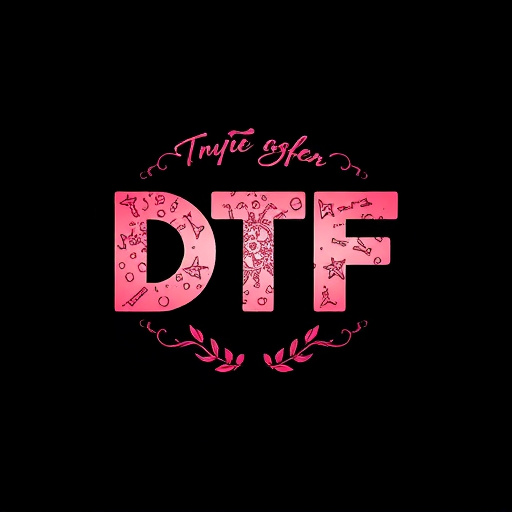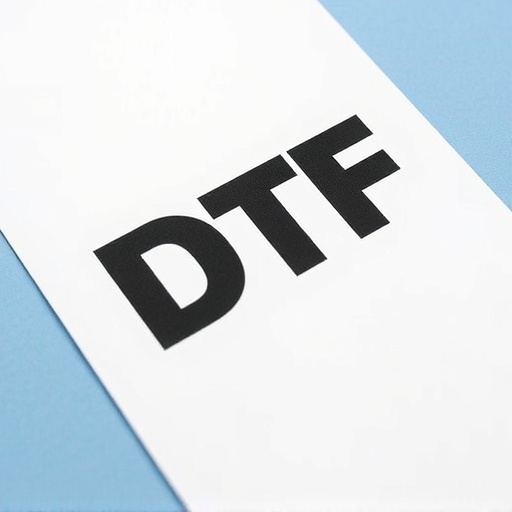Direct-to-film (DTF) transfer technology revolutionizes print production by offering high-quality, durable prints on diverse materials. Using heat and pressure, DTF printing ensures precise designs with vibrant colors that withstand multiple washes, eliminating issues like misregistration and ink bleeding. Key factors influencing DTF print quality include specific inks, synthetic fabrics, advanced piezoelectric technology, pre-treatment, regular equipment maintenance, and adherence to washing instructions. Best practices ensure DTF prints remain vibrant and durable, while common mistakes can be avoided by using premium materials and ensuring proper preparation and curing. Future advancements in DTF transfer and printing promise enhanced color accuracy, longevity, and efficiency, solidifying its position in the fashion industry for personalized garments.
Discover the future of printing with direct-to-film (DTF) technology, revolutionizing the way we produce high-quality, durable prints. This article explores the science behind DTF transfer, ensuring prints maintain their vibrancy through countless washes. From understanding the process to mastering best practices, we’ll guide you through the key factors affecting DTF print quality. Uncover common mistakes to avoid and stay ahead with future trends in this game-changing printing method.
- Understanding Direct-to-Film (DTF) Transfer Technology
- The Quality Promise: DTF Prints and Durability
- Key Factors Affecting DTF Print Quality
- Best Practices for Maintaining DTF Print Quality
- Common Mistakes to Avoid in DTF Printing
- Future Trends in DTF Transfer and Printing
Understanding Direct-to-Film (DTF) Transfer Technology

Direct-to-film (DTF) transfer technology has revolutionized the way we produce high-quality prints, ensuring exceptional durability even after multiple washes. This innovative process involves transferring ink directly onto a variety of materials—from fabric to metal—without the need for intermediate screens or plates. DTF offers unparalleled precision and detail, allowing for intricate designs and vibrant colors that remain intact even under rigorous washing conditions.
The DTF printing process starts with a digitally printed image that is then precisely aligned and transferred onto the substrate using heat and pressure. This method eliminates potential issues like misregistration and ink bleeding, resulting in crisp, accurate prints every time. Moreover, DTF technology enables the reproduction of complex artwork, making it ideal for various applications, including apparel, signage, and promotional items.
The Quality Promise: DTF Prints and Durability

The quality promise of Direct-to-Film (DTF) prints lies in their exceptional durability, ensuring that vibrant colors and sharp details remain intact even after numerous washes. This superior longevity is attributed to the advanced printing technology used in DTF processes. The DTF transfer method applies a thin layer of ink directly onto the fabric, creating a seamless fusion that withstands the rigors of washing machines and prolonged use.
Compared to traditional printing techniques, DTF printing offers a more robust solution for maintaining image quality. The intricate details and rich colors of DTF prints are locked into the fabric fibers during the curing process, preventing fading or smudging over time. This promise of longevity makes DTF prints an excellent choice for a wide range of applications, from branded apparel to custom designs, ensuring that your message or art remains vivid and impactful even after multiple wears and washes.
Key Factors Affecting DTF Print Quality

Several key factors significantly influence the quality of Direct-to-film (DTF) prints and their longevity through multiple washes. One of the primary considerations is the ink used in the DTF transfer process. High-quality, durable inks designed specifically for DTF printing ensure vibrant colors that withstand washing without fading or cracking. The type of film or substrate chosen plays a crucial role as well; synthetic fabrics like polyester generally offer better dimensional stability and resistance to color bleeding than natural fibers.
Another critical aspect is the printing technology employed. Modern DTF printers utilizing advanced piezoelectric inkjet technology deliver precise, fine-detail prints with consistent ink deposition. Proper calibration and regular maintenance of these printers ensure optimal print quality over time. Additionally, appropriate pre-treatment and post-treatment of fabrics before and after printing, respectively, can enhance the prints’ resistance to water and prevent unwanted interactions during the washing process.
Best Practices for Maintaining DTF Print Quality

Maintaining the quality of direct-to-film (DTF) prints after multiple washes requires careful consideration and adherence to best practices. Firstly, ensure that your DTF transfer process is optimized for the specific fabric type. Different fabrics have varying absorbency rates, which can impact the final print quality. Pre-treating the fabric with a suitable solution before application can enhance ink adhesion and prevent fading.
Regularly cleaning your printing equipment is another vital step. Proper maintenance ensures that no residual ink or buildup occurs, which could contaminate subsequent prints. Additionally, using high-quality inks and ensuring proper curing during the print process will result in more durable DTF prints. Always follow the manufacturer’s guidelines for washing instructions to guarantee the longevity of your designs.
Common Mistakes to Avoid in DTF Printing

Direct-to-film (DTF) printing is a popular method for creating high-quality custom prints, but it’s not without its pitfalls. One of the biggest mistakes makers often encounter is using low-quality ink or paper, which can result in prints that fade or lose their vibrancy after just a few washes. Always opt for premium DTF transfer ink and media to ensure longevity of your designs.
Another common error is improper preparation of the print surface. Ensuring the surface is clean, free of grease or dust, and properly primed is crucial for optimal DTF transfer. Neglecting this step can lead to inconsistent printing quality and poor image resolution on the final product. Additionally, inadequate curing time for ink can cause smudging or peeling, so allow sufficient drying time between applications to avoid these DTF printing mistakes.
Future Trends in DTF Transfer and Printing

The future of direct-to-film (DTF) transfer and printing looks bright, with continuous innovations pushing the boundaries of quality and efficiency. Emerging trends suggest a move towards more advanced materials that offer superior color accuracy and longevity. Developers are exploring new ink formulations that enhance print durability, ensuring DTF prints remain vibrant even after multiple washes. This advancement is particularly appealing for apparel and fabric brands looking to create long-lasting, high-quality products.
Additionally, the integration of digital technologies, such as improved printing presses and precision-cut plotters, will streamline the DTF process, making it faster and more precise. These technological enhancements will enable the creation of intricate designs with finer details, opening up new possibilities for artistic expression in the field of DTF Printing. As demand grows for personalized and unique garments, DTF’s versatility and efficiency will continue to make it a preferred method in the ever-evolving fashion industry.














